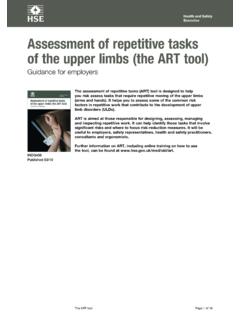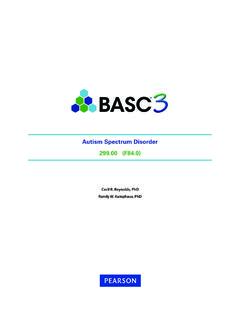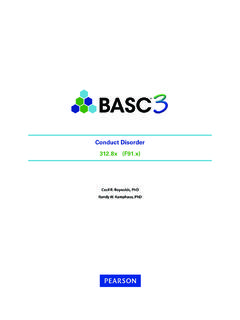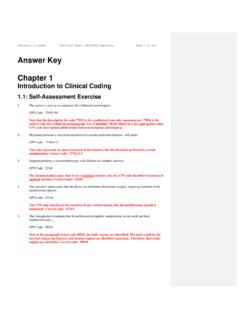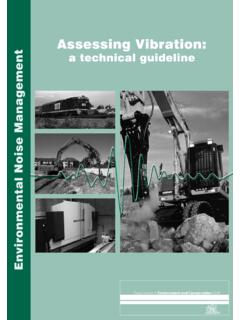Transcription of Practical Demonstrations of Ergonomic Principles
1 RI 9684 REPORT OF INVESTIGATIONS/2011 Practical Demonstrations of Ergonomic Principles Department of Health and Human Services Centers for Disease Control and Prevention National Institute for Occupational Safety and Health Report of Investigations 9684 Practical Demonstrations of Ergonomic Principles Susan M. Moore, , Janet Torma-Krajewski, , , , Lisa J. Steiner, , DEPARTMENT OF HEALTH AND HUMAN SERVICES Centers for D isease Control and Prevention National Institute for Occupational Safety and Health Pittsburgh Research Laboratory Pittsburgh, PA July 2011 This document is in the public domain and may be freely copied or reprinted. Disclaimer Mention of any company or product does not constitute endorsement by the National Institute for Occupational Safety and Health (NIOSH). In addition, citations to Web sites external to NIOSH do not constitute NIOSH endorsement of the sponsoring organizations or their programs or products.
2 Furthermore, NIOSH is not responsible for the content of these Web sites. The findings and conclusions in this report are those of the author(s) and do not necessarily represent the views of the National Institute for Occupational Safety and Health Ordering information To receive documents or other information about occupational safety and health topics, contact NIOSH at Telephone: 1 800 CDC INFO (1 800 232 4636) TTY: 1 888 232 6348 E-mail: or visit the NIOSH Web site at For a monthly update on news at NIOSH, subscribe to NIOSH eNews by visiting DHHS (NIOSH) Publication No. 2011-191 July 2011 SAFER HEALTHIER PEOPLE ii CONTENTS ACKNOWLEDGEMENTS .. v GLOSSARY .. vi SECTION 1: Introduction .. 1 Target Users and 1 Format of Demonstration Descriptions .. 2 Suggested Supplies .. 2 Graphics .. 3 SECTION 2: Neutral Postures.
3 4 Principles ..19 SECTION 4: Hand-Tool Selection and Use ..28 Principles ..28 SECTION 5: Fatigue Failure and Back Pain ..37 Principles ..37 SECTION 6: Moment Arms and Lifting ..41 Principles ..41 APPENDIX A: Suggested Supplies ..47 APPENDIX B: Useful Images for Handouts ..52 REFERENCES ..56 iii FIGURES Figure 1. Neutral and awkward wrist postures.. 5 Figure 2. Neutral and awkward elbow postures.. 6 Figure 3. Neutral and awkward shoulder postures.. 6 Figure 4. Neutral and awkward back 7 Figure 5. Example of a portable EMG device (showing electrodes on skin) that indicates muscle activity by emitting audible signals.. 8 Figure 6. Wrist postures and electrode placement for portable EMG device.. 9 Figure 7. Negative, flat, and positive tilt positions for a keyboard.
4 10 Figure 8. Electrode placement on the upper arm..11 Figure 9. Electrode placement for the shoulder..12 Figure 10. Neutral, abducted, and flexed (reaching) shoulder postures..13 Figure 11. Electrode placement for the back (line indicates location of spine). I t is important that the electrodes are placed on the muscles as shown in the photograph. If the electrodes are placed too high on the back, the demonstration will not work properly..14 Figure 12. Neutral, moderately flexed, and highly flexed postures of the back..15 Figure 13. Hand dynamometer showing how wrist angle affects force production for neutral, ulnar deviation, and radial deviation wrist postures..18 Figure 14. Pinch (lateral) grip and power grip..20 Figure 15. Example of the maximum forces generated for a pinch grip ( lateral) and a power grip.
5 22 Figure 16. Example of a pinch grip (lateral) and the resulting maximum force..24 Figure 17. The power grip i s shown for five different grip w idths. The narrowest grip i s Grip 1; the width increases for each subsequent grip, with Grip 5 being the widest grip..26 Figure 18. Maximum force output for each grip width. Note that, for this participant, Grip 2 had the highest force production..27 Figure 19. Evaluating the effect of tool-handle diameter..30 Figure 20. Examples of situations in which a pistol grip and inline grip w ould be useful as a means for keeping the wrist in a neutral Figure 21. Two types of pliers, one with a spring that reduces forceful exertion when opening the jaw, and one without a spring..34 Figure 22. Example of one-handed and two-handed drilling.
6 36 Figure 23. Image of vertebrae, disc, and endplates..37 Figure 24. A pe n cap that is bent multiple times visually shows fatigue; a paper clip shows the result of failure. The graph (generalized for bone) illustrates how the same load, lifted many times, may ultimately, over time, lead to failure..40 Figure 25. These schematics illustrate how increasing the distance between the worker and the object being lifted increases the overall moment ( , torque) for which the back muscles must compensate by expending more force..42 Figure 26. A moment-arm simulator showing that more force/weight (W; arrow indicates direction of force) is needed to balance the see saw if the moment arm (L) is shorter on one side of the fulcrum as compared to the other side..44 Figure 27. Moment-arm simulator with dial scale showing that, as the moment arm is increased, the resulting force acting on the scale increases.
7 46 Figure A-1. Dimensions for the moment-arm simulator..49 Figure A-2. Examples of the suggested supplies for the iv ACKNOWLEDGEMENTS The technical contributions of Dr. Sean Gallagher pertaining to methods and materials used for the Demonstrations and his assistance writing the background for the lower back Demonstrations (Section 5) are acknowledged. Additionally, the assistance of Jonisha Pollard and Mary Ellen Nelson in obtaining photographs of the Demonstrations and the artistic work of Alexis Wickwire are also acknowledged. The authors also appreciate Alan Mayton s and Patrick McElhinney s willingness to participate in the Demonstrations video. Videotaping and editing of the videos were professionally completed by Charles Urban. v GLOSSARY Awkward posture. Deviation from the natural or neutral position of a body part. A neutral position places minimal stress on the body part.
8 Awkward postures typically include reaching overhead or behind the head; twisting at the waist; bending the torso forward, backward, or to the side; squatting; kneeling; and bending the wrist. Cumulative injury (overuse injury). Cumulative injuries develop from repeated loading of body tissues over time. Such injuries include overuse sprains/strains, herniated discs, tendonitis, and carpal tunnel syndrome. Disorder. A medical condition that occurs when a body part fails to function properly. Ergonomics. The science of fitting workplace conditions and job demands to the capabilities of workers, and designing and arranging items in the workplace for efficiency and safety. Fatigue failure. The weakening or breakdown of material subjected to stress, especially a repeated series of stresses. Force. The amount of physical effort a person uses to perform a task.
9 Inline grip. A hand tool with a straight handle that is parallel with the direction of the applied energy. Moment (torque). The tendency to produce motion about an axis. Moment arm. The perpendicular distance between an applied force and the axis of rotation. For muscles, this is the perpendicular distance between the line of action of the muscle and the center of rotation at the joint. Musculoskeletal disorders (MSDs). Illnesses and injuries that affect one or more parts of the soft tissue and bones in the body. The parts of the musculoskeletal system are bones, muscles, tendons, ligaments, cartilage, and their associated nerves and blood vessels. Neutral body posture. The resting position of body parts. Pinch grip. A grasp in which one presses the thumb against the fingers of the hand and does not involve the palm. Pistol grip. A tool handle that resembles the handle of a pistol and is typically used when the tool axis must be elevated and horizontal or below waist height and vertical.
10 Power grip. A grasp where the hand wraps completely around a handle, with the handle running parallel to the knuckles and protruding on either side. vi repetitive . Performing the same motions repeatedly over time. The severity of risk depends on the frequency of repetition, speed of the movement, number of muscle groups involved, and required force. Risk factor. An action and/or condition that may cause an injury or illness, or make an existing injury or illness worse. Examples related to ergonomics include forceful exertion, awkward posture, and repetitive motion. Stress. Demand (or burden ) on the human body caused by something outside of the body, such as a work task, the physical environment, work-rest schedules, and social relationships. Traumatic injury. Injuries that are acute, that may result from instantaneous events such as being struck by objects and that often require immediate medical attention.










